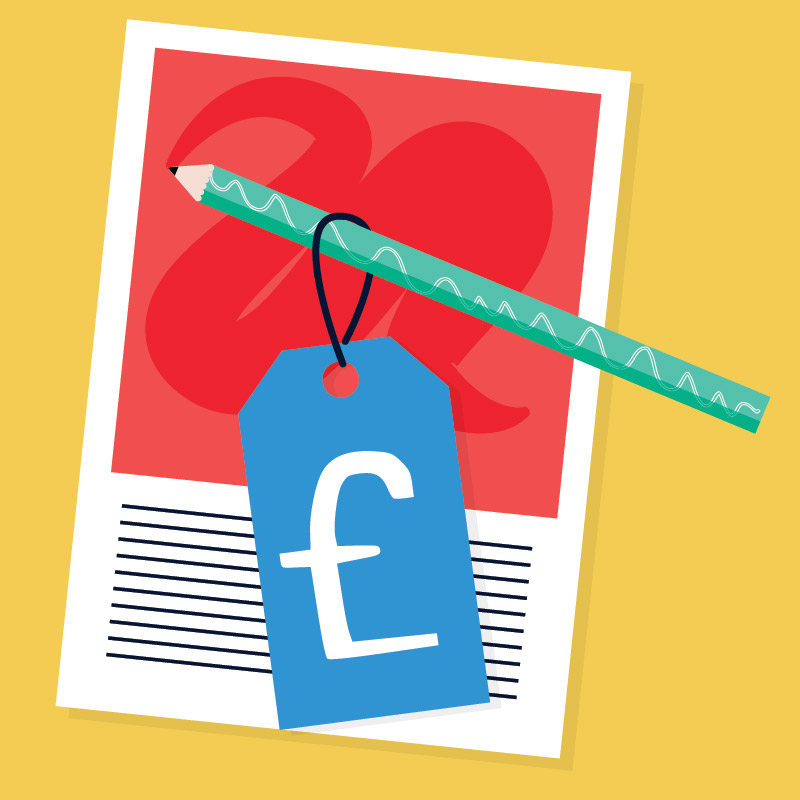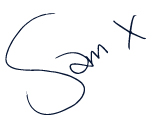
One of the first questions I get asked by clients is how much the job is going to cost. It’s never a simple question and having a nice neat price list is almost impossible for most illustrators. If you’re not used to commissioning illustration it can all seem a bit of a dark art, so here is my illuminating guide to how illustrators work out their fees.
It may seem obvious, you want an original illustration of a women gardening for your advert, you ask an illustrator, they work out how long it will take and give you a price. It would be great if it were that simple but pricing rarely is. There are a lot more variables than how long it will take that effect the cost of a job. If you make contact with an illustrator they are likely to come back with a whole bunch of questions about your project, such as:
- What the illustration will be used for? Is it for print or online? How big is the print run? Is it local, national or global in scale? How long will you be using it?
- What size is the client? Massive global companies are understandably likely to be charged more than small local businesses and start-ups.
- Do you want to licence the work or buy outright? Licensing the work involves a rights agreement based on the time, markets and territories the illustrations will be used for. After and outside of this agreement the rights to the illustration revert back to the original illustrator. Buying outright can be more expensive but means you own all the rights to the work in perpetuity.
- How complex do you need the illustration to be? More detailed illustration styles will cost more money.
- How will the project be structured? If you want to see lots of rough sketches at the start or need several different sized deliverables at the end then the price will reflect this extra work.
- What timescales are you working to? If you are in a mad hurry for the work then you may end up paying rush fees.
A lot of these questions are to try and work out the business value of the project to the client. If the illustration is going to be used by a global business on worldwide TV adverts and be the ‘face’ of that company for a long period of time then it’s of mammothly huge business value and they should be spending more then a few thousand pounds on it. A lot more.
How I price work
As a member of The Association of Illustrators I have access to pricing guides that help me understand what the industry standard cost would be given all the above criteria. This is an incredibly useful resource that I use to confidently work out what my final quote for a job will be. I also take into account what I’ve charged previously for similar jobs, the overall project requirements and if the job is a good fit for my style. Because I’m an illustrator and a graphic designer there are often additional elements that I can help with, such as brochure, brand or packaging designs using the illustrations. These are either included in the overall cost of the project or listed as separate line items so my client can decide how much they would like me to help with.
Project fee vs hourly rate
Generally I work on a project fee basis rather than an hourly or daily rate. I’ve never been a fan of charging by time for a number of reasons, not least:
- I work quickly and efficiently and I don’t think I should be financially penalised for that.
- Inspiration and creativity doesn’t respect the clock. It doesn’t show up the moment I sit down and start a timer!
- An hourly rate doesn’t reflect the business value of the job to my client.
- Lots of types of jobs have standard accepted pricing, editorial illustration being one, so an hourly rate is useless in this situation.
The only time I find an hourly rate is useful is when a project starts to creep outside the scope of the original agreement. If that happens then I usually revert to my hourly rate to charge for the extra elements. If there is lots of extra work this can result in the additional work costing more in total than the original job! A side note: – this is why it’s really important, for both parties, to have a detailed and agreed brief and project specification before starting any work and to understand the financial implications of scope creep.
Then the remaining bit of the pricing puzzle is to work out licensing or buyout fees. I come from a graphic design background where licensing doesn’t really exist so it came as a bit of a surprise to me when I started working in the illustration world. There are some jobs where it’s obviously very useful and others where it really makes little sense to me. I have a few ways of dealing with this and approach each project on a job-by-job basis in conversation with the client. As an industry standard illustration work is generally bought on license and is charged according to its usage, the more rights you want to buy the more expensive it becomes.
Reveal your budget
I know that a lot of clients don’t like to do this but, honestly it makes this process so much easier. If you tell me what you need and how much you have in the pot to pay for it I can quite quickly work out if the two tally up. If they do, then great we can get to work, if not then I can probably work something out to bring the project in on budget – a slightly different style, less revisions, a more specific licence etc. Commissioning design and illustration is about taking a journey together so it’s in my best interest to make your budget work if I can. Playing your cards close to your chest on this often means that we can’t ever meet in the middle and so we both lose out.
I hope that has demystified the process of costing an illustration job for you a little. If you’d like to talk about my prices for a specific job get in touch and we can talk!
If you’d like to find out more about writing a project brief then check out my blog post about that here

